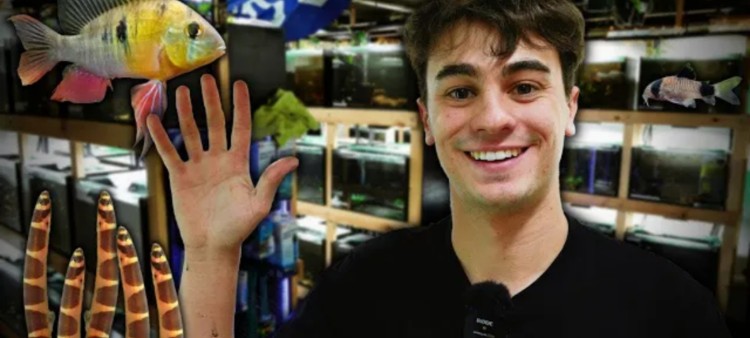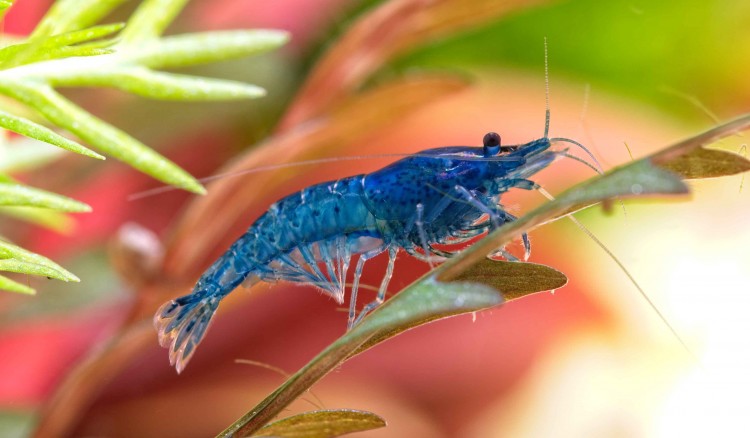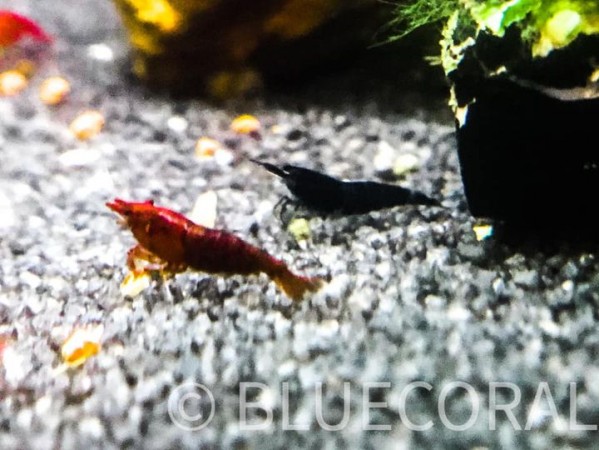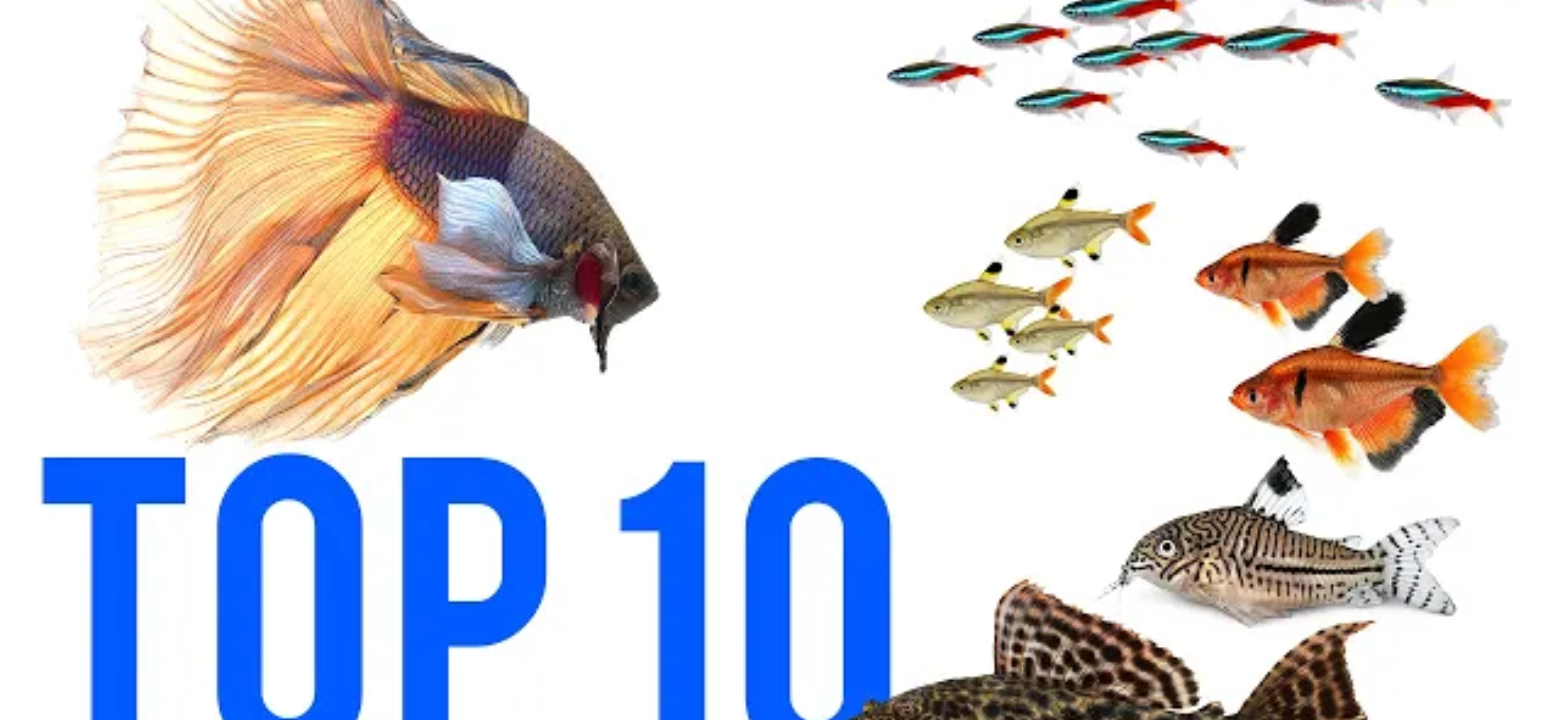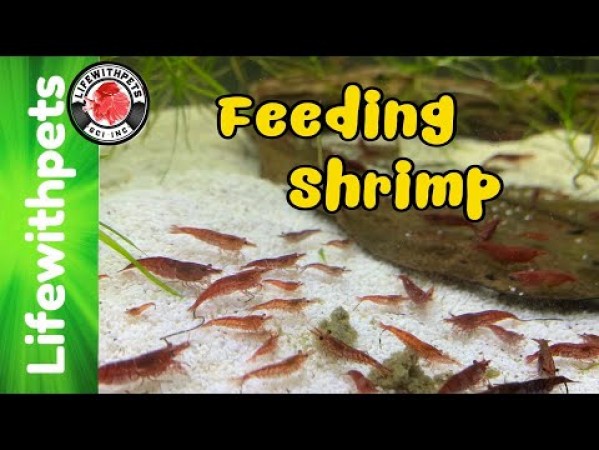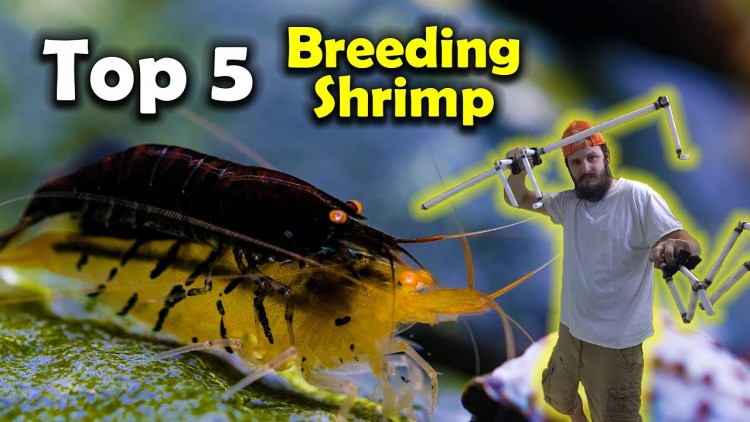- Name:
Peacock Mantis Shrimp
(View AKA's) - Family: Odontodactylidae
- Species: Shrimp
- Scientific Name: Odontodactylus scyllarus
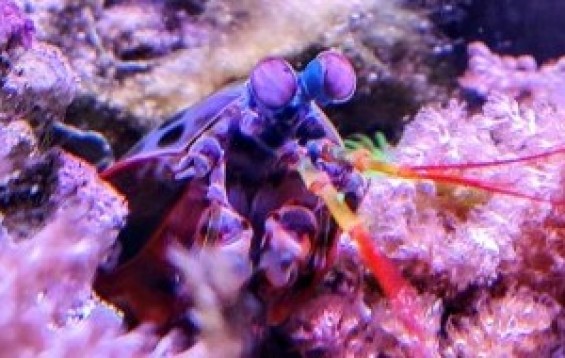

General info about Peacock Mantis Shrimp
Despite their common name, they aren't shrimps, as they belong to a different taxonomic group with the Phylum Arthropoda. "Real" shrimps belong to the Order Decapoda, but mantises reside to the Order Stomatopoda and are appropriately called stomatopods. While numerous features set shrimps and stomatopods apart, the most obvious is the possession of specialized prey-capturing/killing limbs known as raptorial appendages. There are also two discrete and different forms for these appendages, leading to a division of all mantises into two broad groups. Depending on which kind they brandish, mantises will use them primarily to break things or to stab things. Thus, they are called either "smashers" or "spearers" respectively.
There are some general behavioral differences between the two groups, too. Smashers tend to live in holes/tubes in rocks, or rock rubble, but spend time roaming about stalking prey. They tend to feed on crabs, snails, and other shelled victims, and will use their "weapons" to pound open their victims' shells, eating the contents afterward. Conversely, spearers tend to build and wait in burrows on soft sediment bottoms and feed on fishes and other soft-bodied prey using an ambush technique. They stay in place and wait for a victim to inadvertently come into their range, quickly reaching out to nail them. One type of mantis may eat the other's preferred food, though, if the need and opportunity arise.
They also consistently have a shortened body and an elongated, very flexible tail, which allows them to turn around quickly and easily in tight spaces and in burrows. The tail and the specialized oar-like swimming appendages on its underside also enable stomatopods scoot/swim surprisingly fast when on the hunt, or when they get spooked. The raptorial appendages are found where we would typically expect to see some pincers/claws on a shrimp or lobster. They can be used for predation and self-defense, and often for modifying their environment when necessary, as well.
Mantis shrimp live for over 20 years in captivity. Mantis shrimp are only about four inches long, but pound for pound is one of the strongest animals in the world. They use clubs that are more like elbows than fists to punch their prey with the force of a bullet shot from a 22 caliber gun. This incredible force is essential for hunting food quickly breaking the shells of prey like crabs and clams. They aren't just strong, and they're fast too. They have the fastest predatory strike in the ocean, swinging in less than 800 microseconds. In the time it takes you to blink an eye, the mantis shrimp could theoretically punch 500 times.
Mantis eyes are extraordinary. While humans have three color receptors, a Mantis shrimp can have up to 16 of them. There are also color filters and even polarization receptors so, unlike any other animal, Mantis shrimp can see polarised light and the reasoning behind this may well be down to breeding or other means of communication. The ability to display in polarising light means that mantids can potentially make contact with each other without the risk of revealing themselves to other predators.
Mantids also have an acute sense of smell, combined with an ability to learn fast. When a Mantis first meets an octopus, for example, a fight will ensue. After that, it remembers what an octopus smells like and when it comes across a burrow with octopus aroma, it will instantly tense up, assume a battle stance, and enter cautiously. Also whether they map their neighborhoods visually or through smell isn’t fully understood, but we do know that when a Mantis sets up a home, it learns its surroundings intimately and can find its way about with ease.
A secure retreat, preferably a burrow below the substrate, is essential. Despite their fearless attitude, mantis shrimp will languish and die if forced to remain in the open. Providing a proper home will result in your seeing your pet more, not less, as it will feel secure enough to behave normally. Artificial rocks work well. Mantis shrimp will also explore rock and coral mounds, move incredibly large amounts of sand and gravel from one place to another, and sometimes manage to create quite stable burrows of their own.
Although water quality is more easily managed in large aquariums, small mantis shrimp do quite well in 10-gallon aquariums. Individuals longer than 8 inches or so do best in a tank of 20 gallons or larger. Keep lighting low, and high-intensity LEDs or metal halides are not needed. Even a single T8 tube will provide all that’s necessary. Most species thrive at temperatures of 74-80°F, and salinities of 1.020-1.022. However, various species range from temperate to tropical waters, so please research the natural habitats of those you keep. Setting a light timer to mimic their natural cycle (i.e., varying the cycle for temperate species) will likely benefit their overall health. Mantis shrimp are reasonably hardy as concerns water quality but are, like many aquatic invertebrates, quite sensitive to airborne chemicals. Fumes from cleaning products, paints, floor waxes and such may be introduced into even covered aquariums by the filtration system and can be toxic to mantis shrimp. Unexplained aquarium deaths can often be attributed to chemical poisoning.
Peacock Mantis Shrimp Diet & Nutrition
Depending upon the species, mantis shrimp catch their food using either of two distinct methods. Those which “club” their food and shatter the shell or carapace can take small crabs, crayfish, snails, mussels and other invertebrates. Those that grab or spear their prey are best-fed shrimp, fish and aquatic worms (the “prey bashers” will accept these as well).
Mantis shrimp can be quite choosy when it comes to feeding – sometimes killing a live food item, seemingly as territorial defense, but not consuming it. Most will, however, adjust to unfamiliar foods over time. They will, if you work carefully, usually accept dead food from a forceps (do not use your fingers, as serious injury can result). This takes time and experimentation – actually, it is quite comical to see them grab an unfamiliar food, retreat into their den, and then contemptuously toss it out as unpalatable!
Caution with Peacock Mantis Shrimp
They have a strong feeding and burrow defense response, and so may attack fingers moved in their vicinity. Always use tongs or other similar tools when working in the tank, and use a net if handling is necessary.
Original Detail
| Name | Species | Family | Scientific Name | More Detail | Added by |
|---|---|---|---|---|---|
| Peacock Mantis Shrimp | Shrimp | Odontodactylidae | Odontodactylus scyllarus | Despite their common name, they aren't shrimps, as they belong to a different taxonomic group with the Phylum Arthropoda. "Real" shrimps belong to the Order Decapoda, but mantises reside to the Order Stomatopoda and are appropriately called stomatopods. While numerous features set shrimps and stomatopods apart, the most obvious is the possession of specialized prey-capturing/killing limbs known as raptorial appendages. There are also two discrete and different forms for these appendages, leading to a division of all mantises into two broad groups. Depending on which kind they brandish, mantises will use them primarily to break things or to stab things. Thus, they are called either "smashers" or "spearers" respectively. There are some general behavioral differences between the two groups, too. Smashers tend to live in holes/tubes in rocks, or rock rubble, but spend time roaming about stalking prey. They tend to feed on crabs, snails, and other shelled victims, and will use their "weapons" to pound open their victims' shells, eating the contents afterward. Conversely, spearers tend to build and wait in burrows on soft sediment bottoms and feed on fishes and other soft-bodied prey using an ambush technique. They stay in place and wait for a victim to inadvertently come into their range, quickly reaching out to nail them. One type of mantis may eat the other's preferred food, though, if the need and opportunity arise. They also consistently have a shortened body and an elongated, very flexible tail, which allows them to turn around quickly and easily in tight spaces and in burrows. The tail and the specialized oar-like swimming appendages on its underside also enable stomatopods scoot/swim surprisingly fast when on the hunt, or when they get spooked. The raptorial appendages are found where we would typically expect to see some pincers/claws on a shrimp or lobster. They can be used for predation and self-defense, and often for modifying their environment when necessary, as well. Mantis shrimp live for over 20 years in captivity. Mantis shrimp are only about four inches long, but pound for pound is one of the strongest animals in the world. They use clubs that are more like elbows than fists to punch their prey with the force of a bullet shot from a 22 caliber gun. This incredible force is essential for hunting food quickly breaking the shells of prey like crabs and clams. They aren't just strong, and they're fast too. They have the fastest predatory strike in the ocean, swinging in less than 800 microseconds. In the time it takes you to blink an eye, the mantis shrimp could theoretically punch 500 times. Mantis eyes are extraordinary. While humans have three color receptors, a Mantis shrimp can have up to 16 of them. There are also color filters and even polarization receptors so, unlike any other animal, Mantis shrimp can see polarised light and the reasoning behind this may well be down to breeding or other means of communication. The ability to display in polarising light means that mantids can potentially make contact with each other without the risk of revealing themselves to other predators. Mantids also have an acute sense of smell, combined with an ability to learn fast. When a Mantis first meets an octopus, for example, a fight will ensue. After that, it remembers what an octopus smells like and when it comes across a burrow with octopus aroma, it will instantly tense up, assume a battle stance, and enter cautiously. Also whether they map their neighborhoods visually or through smell isn’t fully understood, but we do know that when a Mantis sets up a home, it learns its surroundings intimately and can find its way about with ease. A secure retreat, preferably a burrow below the substrate, is essential. Despite their fearless attitude, mantis shrimp will languish and die if forced to remain in the open. Providing a proper home will result in your seeing your pet more, not less, as it will feel secure enough to behave normally. Artificial rocks work well. Mantis shrimp will also explore rock and coral mounds, move incredibly large amounts of sand and gravel from one place to another, and sometimes manage to create quite stable burrows of their own. Although water quality is more easily managed in large aquariums, small mantis shrimp do quite well in 10-gallon aquariums. Individuals longer than 8 inches or so do best in a tank of 20 gallons or larger. Keep lighting low, and high-intensity LEDs or metal halides are not needed. Even a single T8 tube will provide all that’s necessary. Most species thrive at temperatures of 74-80°F, and salinities of 1.020-1.022. However, various species range from temperate to tropical waters, so please research the natural habitats of those you keep. Setting a light timer to mimic their natural cycle (i.e., varying the cycle for temperate species) will likely benefit their overall health. Mantis shrimp are reasonably hardy as concerns water quality but are, like many aquatic invertebrates, quite sensitive to airborne chemicals. Fumes from cleaning products, paints, floor waxes and such may be introduced into even covered aquariums by the filtration system and can be toxic to mantis shrimp. Unexplained aquarium deaths can often be attributed to chemical poisoning. |
PalaciosAn |
Changed by users
| Submitted Date | Submitted By | Status | Action |
|---|


